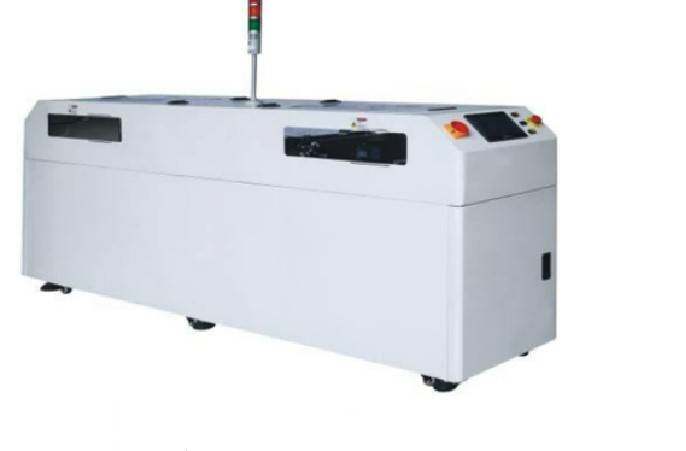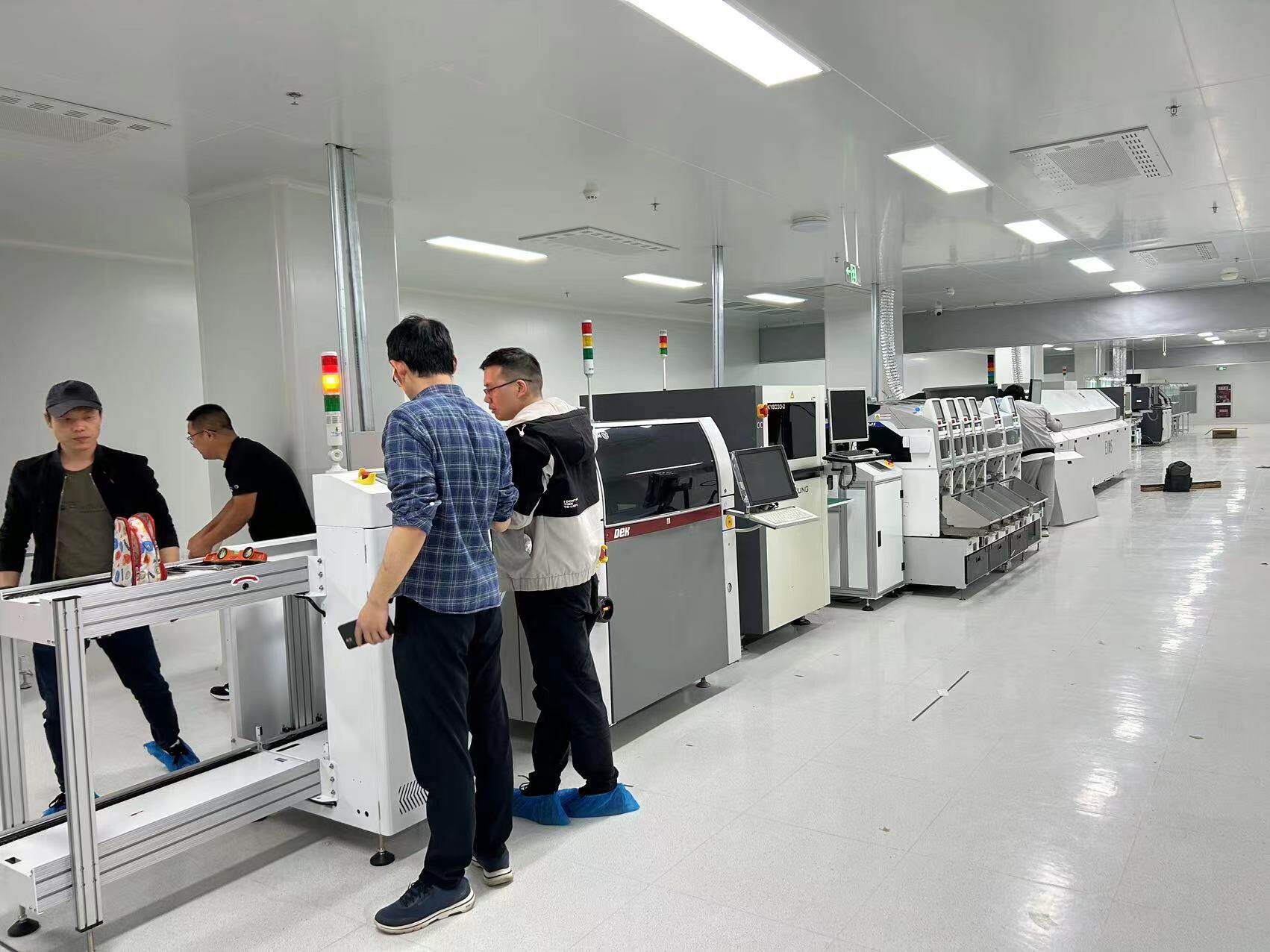Email format error
Email cannot be empty
Email already exists
6-20 characters(letters plus numbers only)
The password is inconsistent
Email format error
Email cannot be empty
Email does not exist
6-20 characters(letters plus numbers only)
The password is inconsistent


In the world of electronics manufacturing, Surface Mount Technology (SMT) plays a crucial role. It has revolutionized the way electronic components are mounted onto printed circuit boards (PCBs). In this blog post, we will delve into the details of what is SMT line, its components, and its significance in the manufacturing process.
1. What is SMT Line?
An SMT line, also known as an SMT assembly line, is a series of machines and equipment used to assemble electronic components onto PCBs using the surface mount technology. It is a highly automated process that offers several advantages over traditional through-hole technology, such as smaller component sizes, higher component density, and improved manufacturing efficiency.
2. What is SMT Line? - Components
Pick and Place Machine: The pick and place machine is the heart of an SMT line. It is responsible for accurately placing electronic components onto the PCB. This machine uses a combination of mechanical and vacuum-based systems to pick components from reels or trays and place them onto the PCB with high precision. For example, the famous Fuji pick and place machine.
Reflow Oven: After the components are placed on the PCB, the assembly goes through a reflow oven. The reflow oven heats the PCB to a specific temperature, melting the solder paste and creating a strong bond between the components and the PCB. This process is crucial for ensuring reliable connections and proper functionality of the electronic devices.
Stencil Printer: The stencil printer is used to apply solder paste onto the PCB before the components are placed. It uses a stencil, which is a thin metal sheet with openings corresponding to the component footprints on the PCB. The solder paste is applied through these openings, ensuring precise and consistent deposition.
Inspection Systems: Various inspection systems are integrated into the SMT line to ensure the quality and accuracy of the assembly. These systems include Automated Optical Inspection (AOI), which uses cameras to detect defects or misalignments, and X-ray inspection, which allows for non-destructive testing of hidden solder joints.
Conveyors and Conveying Systems: Conveyors are used to transport the PCBs between different machines and stations in the SMT line. They ensure a smooth and continuous flow of the assembly process, minimizing downtime and maximizing productivity.
3. Significance of SMT Line?
The SMT line has revolutionized the electronics manufacturing industry by offering numerous advantages over traditional through-hole technology. Some of the key benefits include:
Miniaturization: SMT allows for the use of smaller and lighter electronic components, enabling the development of compact and portable devices. This has been instrumental in the advancement of consumer electronics, medical devices, and automotive electronics.
Higher Component Density: SMT enables higher component density on PCBs, as components can be placed on both sides of the board. This results in more functionality in a smaller footprint, making it ideal for applications where space is limited.
Improved Manufacturing Efficiency: The automated nature of the SMT line significantly improves manufacturing efficiency. It reduces manual labor, minimizes human errors, and increases production throughput. This leads to cost savings and faster time-to-market for electronic products.
Enhanced Reliability: The precise placement of components and the use of solder paste in the SMT process ensure reliable connections and robust solder joints. This improves the overall reliability and durability of electronic devices, reducing the chances of failure or malfunction.
4. What is SMT Line? - SMT Accessories
In addition to the main components of an SMT line, there are various accessories that enhance its functionality and efficiency. These accessories include:
1). Component Feeders:
Tape Feeders: These feeders hold components in tape reels and feed them to the pick and place machine. They come in various sizes to accommodate different component sizes and types.
Tray Feeders: Tray feeders hold components in trays or pockets and present them to the pick and place machine. They are commonly used for larger or irregularly shaped components.
Stick Feeders: Stick feeders are used for components that are packaged in stick form, such as axial or radial components. They feed the components to the pick and place machine one by one.
2). Solder Paste Dispensers:
Pneumatic Dispensers: Pneumatic dispensers use air pressure to accurately dispense solder paste onto the stencil or PCB. They offer precise control over the amount and location of the solder paste deposition.
Auger Dispensers: Auger dispensers use a rotating auger mechanism to dispense solder paste. They are suitable for high-viscosity solder pastes and provide consistent and reliable dispensing.
Jet Dispensers: Jet dispensers use a jetting mechanism to dispense solder paste in small droplets. They are ideal for precise and controlled dispensing, especially for fine-pitch components.
3). Stencils:
Metal Stencils: Metal stencils are thin sheets made of stainless steel or nickel. They have openings corresponding to the component footprints on the PCB, allowing solder paste to be applied precisely during the stencil printing process.
Laser-Cut Stencils: Laser-cut stencils are made by using laser technology to cut openings in a stencil material, such as polyester or polyimide. They offer high precision and are suitable for fine-pitch components and complex PCB designs.
Nano-Coated Stencils: Nano-coated stencils have a special coating that improves solder paste release and reduces smearing. This coating enhances the printing quality and helps achieve consistent solder paste deposition.
4). SMT Nozzles:
Vacuum Nozzles: Vacuum nozzles are used in pick and place machines to pick up components from the feeders and place them onto the PCB. They use vacuum suction to hold the components securely during the placement process.
Jetting Nozzles: Jetting nozzles are used in jet dispensers to accurately dispense solder paste or adhesive onto specific locations on the PCB. They come in different sizes and shapes to accommodate various dispensing requirements.
Cleaning Nozzles: Cleaning nozzles are used to clean the solder paste or adhesive residues from the stencil or PCB after the printing or dispensing process. They ensure proper maintenance and prevent contamination.
Conclusion
After the comprehensive guidance, you can know clearly about what is SMT line. An SMT line is a critical component of modern electronics manufacturing. It enables the efficient and precise assembly of electronic components onto PCBs, offering numerous advantages over traditional through-hole technology. With the continuous advancements in SMT technology and the integration of innovative accessories, the SMT line will continue to play a pivotal role in shaping the future of electronics.